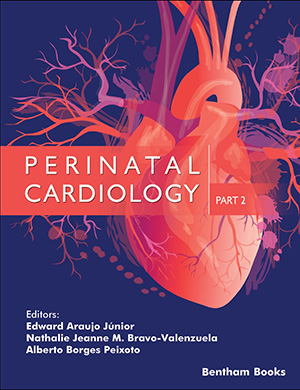Abstract
Congenital heart diseases (CHD) are common, of largely unknown etiology, with high mortality. This chapter presents the available information on environmental factors that may alter the risk for CHD. Information regarding parental characteristics and conditions, maternal therapeutic drug exposures, parental nontherapeutic drug exposures, and environmental exposures are presented. Aside from some cardiac teratogens and prenatal maternal conditions or exposures associated with an increased risk for CHD, such as thalidomide, and retinoids, smoking, maternal rubella infection, phenylketonuria, hypertension, and diabetes, studies investigating most of environmental risk factors have yielded conflicting results. Associations were found for febrile illness, in vitro fertilization, stressful life events, hyperhomocysteinemia, obesity, hypertension, antihypertensives, bronchodilators, anticonvulsant drugs, nontherapeutic drugs, alcohol, air pollution, disinfectant products, pesticides, solvents, metals and landfill/hazardous waste sites. Some principles for prevention can be useful, as preconception and prenatal care with specific attention to the intake of folic acid, vaccination for rubella, detection and effective management of phenylketonuria, hypertension, and diabetes, discussion of any medicine use, avoidance of infections and chemical exposures, alcohol, smoking, and non-therapeutic drugs. Women receiving therapeutic drugs should be regularly monitored. In addition, screening for CHD should be performed when environmental risk factors are present. Further investigations for the development of prevention and intervention are needed.
Keywords: Air pollution, Alcohol, Chemical exposure, Congenital heart disease, Diabetes, Disinfectant by-products, Drug exposures, Environmental risk factors, Etiology, Febrile illness, Folic acid, Hazardous waste sites, Hypertension, Infection, Obesity, Rubella, Smoking, Solvents, Teratogens, Vitamin A congeners/retinoids.






















